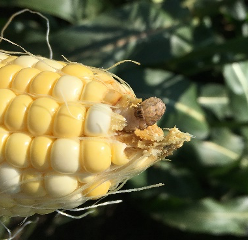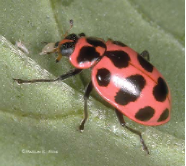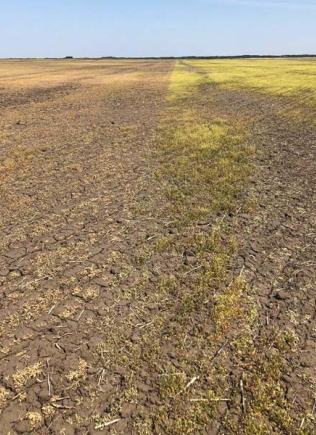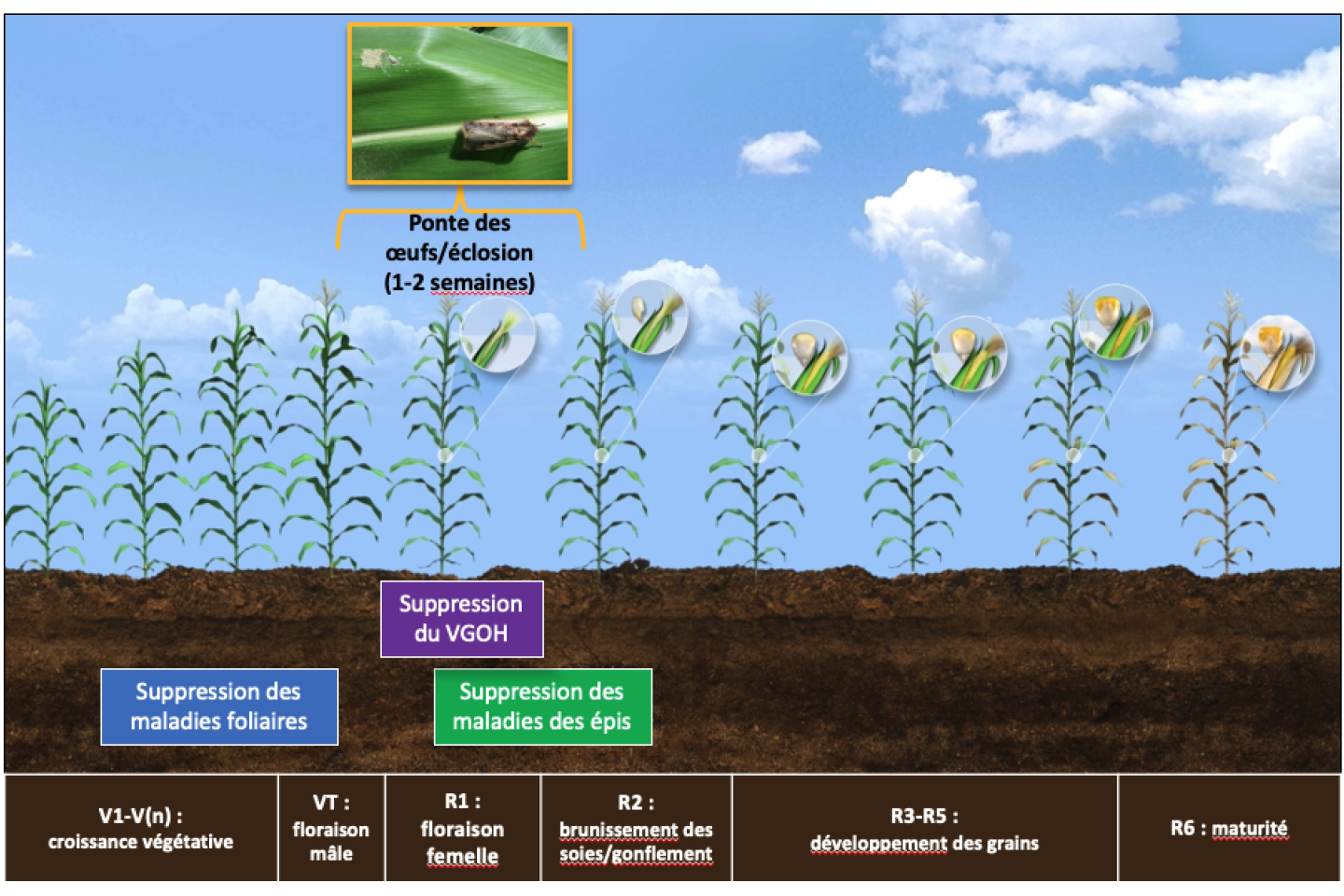Question
Why would I need help from beneficial insects if I am applying an insecticide? Won’t the Western bean cutworm be killed by the insecticide?

ANSWER
Though WBC eggs and new larvae are controlled by an insecticide, WBC females will deposit their eggs over time and eggs can be laid after the insecticide application. Choosing insecticides that are less harmful to natural enemies will allow for clean-up of later laid egg masses.
What the Research Says
Can insecticides and beneficial Insects team up to help control Western Bean Cutworm (WBC)?
Yes (with the right insecticide).
“The enemy of my enemy is my friend” – ancient proverb
A healthy beneficial insect population can have substantial impacts on Western bean cutworm (WBC) eggs and larvae. Lady beetles, pirate bugs, lacewing larvae, and predacious ground beetles are known to consume eggs and early stage larvae of WBC (Seymour et al. 2004). Recent research in Nebraska demonstrated that spotted lady beetles (Colemegilla maculata) voraciously and preferentially attacked WBC eggs when given the choice between the eggs and corn pollen. This supports anecdotal evidence from fields in Ontario where lady beetles and other natural enemies have been found feasting on both WBC eggs and larvae.

Q: Why would I need help from beneficial insects if I am applying an insecticide? Won’t the Western bean cutworm be killed by the insecticide?
A: This is true; most of the egg masses and newly emerged larvae will be killed by a timely application of an effective insecticide. However, WBC females will deposit their eggs over a period of time meaning some will likely be laid after the insecticide application. Professor Julie Peterson from the Agroecosystems Entomology Lab at the University of Nebraska suggests choosing insecticides for WBC control that are less harmful to natural enemies to allow for “clean-up” of later laid egg masses.
To ensure that any missed or late egg masses and larvae are taken care of, choose an insecticide that has lengthy residual activity and helps to maintain a strong beneficial insect population.

References
Seymour, R. C., G. L. Hein, R. J. Wright, and J. B. Campbell. 2004. Western bean cutworm in corn and dry beans. Nebraska Cooperative Extension Bulletin G 98-1359-A. University of Nebraska Extension, Lincoln, NE.
Julie A. Peterson, Westen R. Archibald, Jeffrey D. Bradshaw, Débora G. Montezano, Priscila Colombo da Luz, Katharine A. Swoboda Bhattarai, and Robert J. Wright. 2018. Presentation: Harnessing the power of predators and parasitoids to incorporate biological control into western bean cutworm IPM. WBC Symposium at the 2018 International IPM Symposium.
Archibald, Westen Ray, "Conservation Biological Control of Western Bean Cutworm: Molecular gut content analysis of arthropod predators, feeding trials for key predators and agricultural surveys for integrated pest management" (2017). Dissertations and Student Research in Entomology. 49.
Andrew P. Michel, Christian H. Krupke, Tracey S. Baute, and Christina D. Difonzo4. 2010. Ecology and Management of the western bean cutworm (Lepidoptera: Noctuidae) in corn and dry beans. Journal of Integrated Pest Management. 1(1)



